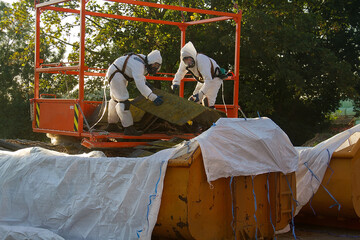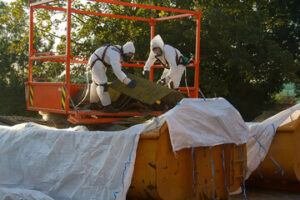Mobile detailing is a convenient way to clean your car. It removes odors from the inside of the vehicle and uses ozone molecules to kill odor-causing particles. It also focuses on the exterior to remove hard contaminants.
Mobile detailers travel to clients’ locations and perform their services onsite. They often bring their own water and electricity to avoid relying on the client’s power supply. Visit https://ww.kolbysmobiledetailing.com/ to learn more.
A mobile detailing service provides the convenience of having your car cleaned right at your doorstep, without the hassle of going to a traditional car wash or having to schedule multiple appointments. The convenience factor alone makes it a great choice for busy car owners who want to keep their cars in top condition. Additionally, a well-maintained vehicle is more likely to command a higher resale value, making it a smart investment.
When choosing a mobile auto detailer, look for one that offers transparent pricing and service packages. Inquire about additional charges and specialized services to ensure you understand the full cost of the service. In addition, inquire about any ongoing promotions or loyalty discounts to save money on future detailing sessions.
Before beginning the cleaning process, a mobile detailer will begin with a thorough exterior wash. They will use high-quality products to clean and protect the vehicle’s paintwork. This will help to prevent scratches and stains on the vehicle’s bodywork, and will also extend the life of the car’s tires and wheels.
Once the exterior is thoroughly cleaned, the detailer will move on to the interior of the vehicle. This step is important for preventing the growth of mold and mildew, which can damage upholstery and cause odors. The detailer will also wipe down the dashboard, console, and steering wheel to remove dirt and grime.
In addition to a deep cleaning, mobile detailing services offer a variety of add-ons that can be customized to your needs. For example, some detailers will provide a ceramic coating or headlight restoration service. This can add value to your sports car and improve its appearance.
Mobile detailing services are typically owned and operated by small business owners, so they can provide competitive pricing compared to traditional car shops. This is because they do not have to pay rent and overhead costs for a physical location. In addition, they can work at times that are convenient for you. In contrast, a traditional car shop is only open at certain times and must pay for workers and overhead expenses.
Customization
A good mobile detailing service specializes in creating a transformational visual experience. Aside from offering exceptional craftsmanship, they also abide by eco-friendly practices and cater to specific vehicle needs. To ensure that you’re choosing a reputable service, start by researching your local options. You can use online platforms, social media, and word of mouth to find a qualified detailer. During your search, consider factors like standing, administrations offered, and client tributes to make an educated decision. Ultimately, you should choose a company that offers the precise services you need while adhering to your budget.
Aside from the time-saving benefits, mobile detailing can also help you preserve your car’s appearance and value. It removes harmful substances and odors, while conditioning the various components of your vehicle’s interior, which will extend their lifespan. This will also lead to a healthier cabin environment, making for a more enjoyable and stress-free driving experience.
Regular mobile detailing can also protect your paint job against environmental damage, including rust corrosion. It helps to clean the undercarriage and eliminate corrosive road salt deposits before they can damage your paint finish. In addition, you can use protective wax coatings to protect against abrasions and UV damage. To keep your car’s exterior looking pristine, you should wash it frequently with mild soap and microfiber cloths.
It’s essential to choose a professional detailer who understands the unique challenges of your geographic region and climate. For example, tropical regions can experience excessive humidity that accelerates rust corrosion. To combat this issue, you should invest in a rust proofing treatment from a reputable mobile detailing professional. In arid or dusty areas, frequent vacuuming and the use of airborne odor absorbers will help to keep your vehicle’s interior clean and hygienic.
You should also look for a detailer that offers a range of add-ons and packages, so you can customize the service to your exact needs. A reputable mobile auto detailing company will offer straightforward pricing plans that line up with your budget. Additionally, they will provide the necessary equipment to work on your vehicle, so you won’t have to worry about any extra expenses.
Safety
A thorough detailing process not only cleans a vehicle’s exterior and interior but also protects it from damage. A professional mobile detailer uses specialized products to break down harsh contaminants and help your paint last longer. They can even give your car a ceramic coating to protect against road debris, water spots, and UV rays.
This service is a great alternative to traditional car washes, which can be less effective and expensive. Additionally, it’s more eco-friendly because it uses water-saving methods and environmentally friendly products. If you’re considering a mobile auto detailing service, make sure the company has an excellent track record and offers a variety of packages.
Mobile car detailing can be done at the client’s location, which means you can get your car detailed in a driveway or garage instead of a car wash. This makes it easier to fit this service into your busy schedule, and you can trust that the professionals will take care of your vehicle.
Another benefit of this type of detailing is that it removes the harmful contaminants in your air vents and dashboard. These contaminants can contaminate your entire car and create an unpleasant smell. Moreover, they can lead to health problems if you breathe them in. A mobile detailer can use a steam cleaner to eliminate these contaminants and leave your car smelling fresh.
A good mobile auto detailing company will clean the interior of your vehicle, including the dashboard, seats, and doors. They’ll also vacuum and shampoo your carpets and upholstery to remove dirt and stains. They’ll also scrub and condition your leather surfaces to keep them in good shape.
Lastly, they’ll clean your windows and mirrors and remove smudges and streaks. This will improve your visibility and reduce glare from headlights, street lights, and sunlight.
Many people are skeptical about a mobile auto detailing service, but they’re becoming more popular. They’re a convenient and affordable option for busy individuals who don’t have time to spend cleaning their own cars. You can find a reliable detailing service by checking reviews and ratings online.
Cost
When choosing a mobile auto detailing service, you should be aware of the cost. These services often charge by the hour or service, with rates based on the size of the vehicle and complexity of the work. For example, large vehicles need more time and materials to clean thoroughly than smaller cars. The use of environmentally safe products also adds to the price of a mobile detailing service.
In addition, many mobile detailers offer eco-friendly options, using low-flow water systems and biodegradable cleaning agents. These methods help reduce water waste and pollution while delivering top-quality results. Moreover, they can be used on any type of vehicle, including trucks and SUVs.
Another advantage of mobile auto detailing is that it can save you time and money. Unlike traditional car washes, you won’t have to spend hours waiting in line and will be able to continue your day with no interruption. This is especially important for people with busy schedules.
Lastly, you can choose from a wide range of detailing services, from basic exterior cleaning to interior cleaning and waxing. This gives you the ability to customize the package that best fits your needs. Additionally, you can enjoy the convenience of having the service come to your home or office.
A mobile detailing service is a great way to keep your car in peak condition and improve its reliability and resale value. It can also prevent costly repairs caused by dirt, road salt, and other contaminants. These substances can damage paint and metal, causing scratches and rust. Mobile detailing companies can prevent these issues by removing these contaminants and applying protective coatings.
In addition, a mobile detailing service is more cost-effective than a traditional car wash because they do not have to pay for a physical location or employees. This allows them to pass the savings on to their customers. As a result, it is a great alternative to in-shop detailing for anyone with a busy schedule. While a mobile detailing service might be more expensive than a traditional shop, the extra time saved and personalized experience make it worth the extra cost.




 Asbestos is a group of naturally occurring fibrous minerals that are very strong, fire-resistant, and flexible. It has been used in over 3,000 commercial and industrial products for its heat resistance, strength, and insulating properties. Many older homes and commercial buildings contain asbestos in building materials such as asbestos cement shingles, insulation, and pipe wraps. It has also been used in paper products and felts such as fireproofing textiles; paints, coatings, and adhesives; and friction materials such as automotive clutch pads, brake linings, and shoes. It has also been found in vermiculite-containing garden products and some talc-based crayons.
Asbestos is a group of naturally occurring fibrous minerals that are very strong, fire-resistant, and flexible. It has been used in over 3,000 commercial and industrial products for its heat resistance, strength, and insulating properties. Many older homes and commercial buildings contain asbestos in building materials such as asbestos cement shingles, insulation, and pipe wraps. It has also been used in paper products and felts such as fireproofing textiles; paints, coatings, and adhesives; and friction materials such as automotive clutch pads, brake linings, and shoes. It has also been found in vermiculite-containing garden products and some talc-based crayons.


 Consumer pressure washers are usually electric or gas-powered. Electric models plug into an electrical outlet and are supplied with tap water. They deliver around 2,000 pounds of pressure. Gas-powered models can generate twice that amount of pressure. However, gas-powered models are not suitable for cleaning enclosed areas. Some models can also generate hot water. Hot water is especially beneficial for loosening oil. However, you must follow all safety precautions when using a power washer.
Consumer pressure washers are usually electric or gas-powered. Electric models plug into an electrical outlet and are supplied with tap water. They deliver around 2,000 pounds of pressure. Gas-powered models can generate twice that amount of pressure. However, gas-powered models are not suitable for cleaning enclosed areas. Some models can also generate hot water. Hot water is especially beneficial for loosening oil. However, you must follow all safety precautions when using a power washer.